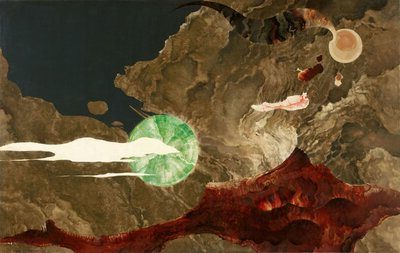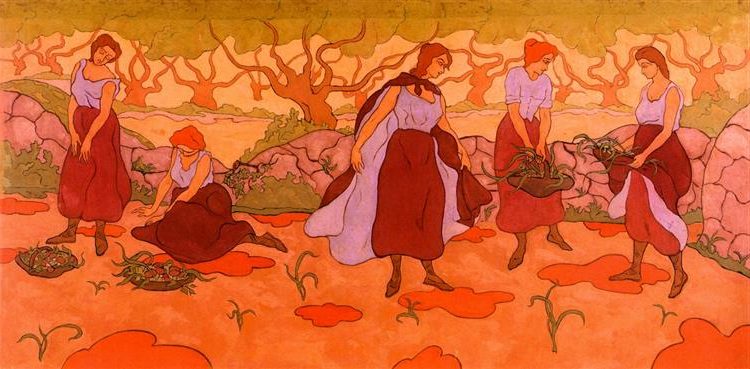Victor Servranckx: Painter and Pioneer of Belgian Abstract Art
Born: 26 June 1897, Diegem, Machelen, Belgium
Death: 11 December 1965, Vilvoorde, Belgium
Art Movement: Cubism, Surrealism, Constructivism
Nationality: Belgian
Institution: Brussels Royal Academy of Fine Arts, Brussels
Victor Servranckx: Painter and Pioneer of Belgian Abstract Art
Life and Background of Victor Servranckx
Victor Servranckx was a prominent Belgian abstract painter and designer. His life and work shaped early 20th century abstract art in Belgium.
Early Years in Diegem
Victor Servranckx was born on June 26, 1897 in Diegem, a town in the municipality of Machelen, Belgium. He grew up in this small Flemish community near Brussels.


His early exposure to art and design is not well documented. But the industrial landscape of the area likely influenced his later abstract style.
Education at Brussels Royal Academy of Fine Arts
Servranckx studied at the Brussels Royal Academy of Fine Arts from 1913 to 1917. This prestigious institution provided formal training in traditional art techniques.
During his time there, he met fellow student René Magritte in 1916. This friendship would prove important for his artistic development.
The academy exposed Servranck to various art movements. These included cubism and constructivism, which shaped his abstract style.
Artistic Collaborations and Influence
Servranckx and Magritte collaborated on the essay “Pure Art: A Defence of the Aesthetic” in 1922. This work outlined their ideas on abstract art.

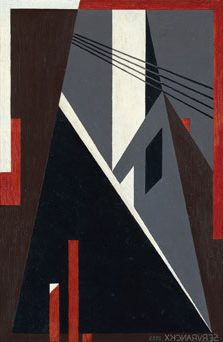
His style blended elements of cubism, constructivism, and surrealism. Servranckx became known as one of Belgium’s first abstract artists.
He was productive, with a major 1924 exhibition featuring over 100 works. His art gained international recognition through the Société Anonyme.
Servranckx’s impact on Belgian abstract art was significant. He helped bridge early 20th century art movements with his unique style.
Artistic Style and Major Works
Victor Servranckx’s art evolved from Cubism to pure abstraction. He embraced Constructivism and became a key figure in the avant-garde movement. His “Opus” series showcased his unique style.
From Cubism to Pure Art
Servranckx started with Cubist influences in his early works. He broke away from traditional forms and moved towards abstract shapes. His paintings became less representational over time.
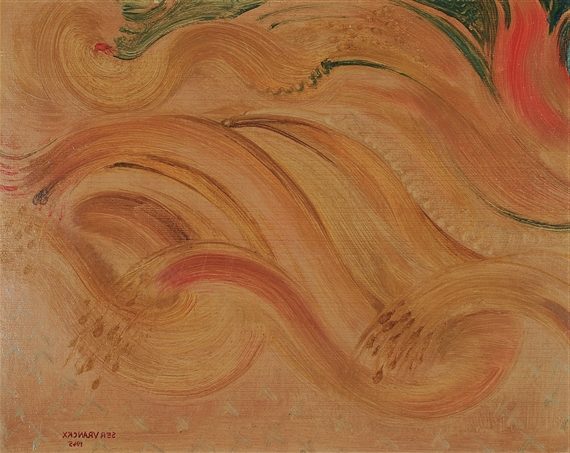
Blé Coupé – Het Koren (1945) by Victor Servranckx
In 1922, Servranckx wrote “Pure Art: A Defence of the Aesthetic” with René Magritte. This text outlined his ideas about abstract art. He believed in creating forms that didn’t copy nature.
Servranckx’s work became more geometric. He used simple shapes and bold colors. His paintings had a clean, modern look.
Constructivism and the Avant-garde Movement
Servranckx was drawn to Constructivism in the 1920s. This style focused on geometric forms and industrial materials. He liked its emphasis on order and structure.
His paintings featured straight lines, circles, and squares. He arranged these shapes in balanced compositions. Servranckx often used a limited color palette.
The artist became part of the avant-garde movement. He helped push art in new directions. His work was shown with other cutting-edge artists of the time.
Significant Works and ‘Opus’ Series
Servranckx’s most famous works are part of his ‘Opus’ series. These paintings show his mature style. They are fully abstract and highly structured.
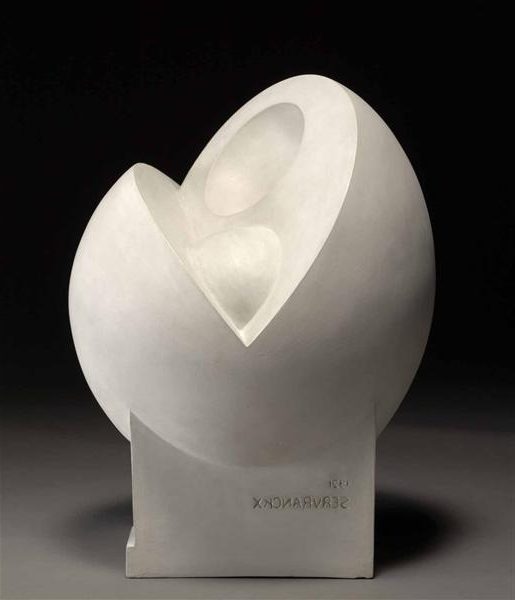
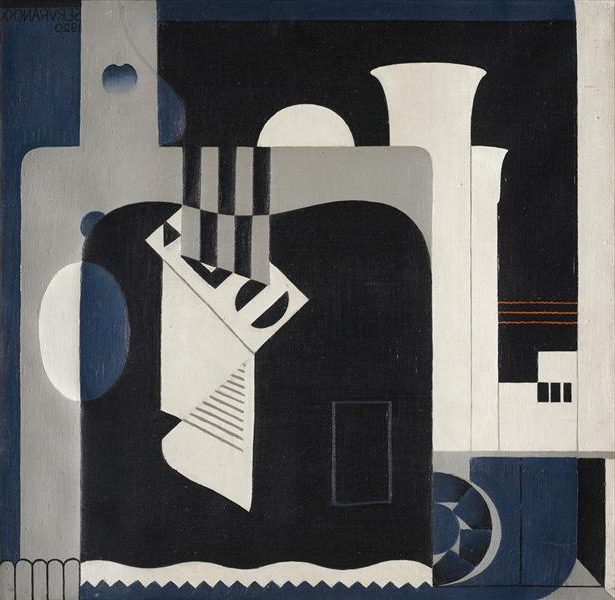
“Opus 1” (1921) is an early example. It has simple geometric forms on a plain background. “Opus 4” (1922) shows more complex arrangements of shapes.
Later works in the series became even more refined. Servranckx used fewer elements but created strong visual impact. His paintings often had a sense of movement or rhythm.
Some key features of his work:
- Bold, flat colors
- Precise geometric shapes
- Balanced compositions
- Minimal backgrounds
Servranckx’s art is now in major museums. It shows the development of abstract art in the early 20th century.
Servranckx’s Impact and Legacy
Victor Servranckx left a lasting mark on abstract art and design in Belgium and beyond. His innovative approach influenced many artists and architects in the 20th century.
Contributions to Design and Architecture
Servranckx made significant contributions to design and architecture. He worked as a designer at a wallpaper factory in Vilvoorde, bringing abstract art into everyday homes. His geometric patterns and bold colors changed the look of Belgian interiors.
Servranckx also created furniture designs. He applied his abstract style to chairs, tables, and lamps. These pieces blended art with function in new ways.
In architecture, Servranckx worked on building designs. He used simple shapes and clean lines. His ideas helped shape modern Belgian architecture in the 1920s and 1930s.
Influence on Surrealism and Later Movements
Servranckx’s work had a big impact on Surrealism. He was friends with René Magritte, a famous Surrealist painter. They wrote a book together called “Pure Art: A Defense of the Aesthetic” in 1922.
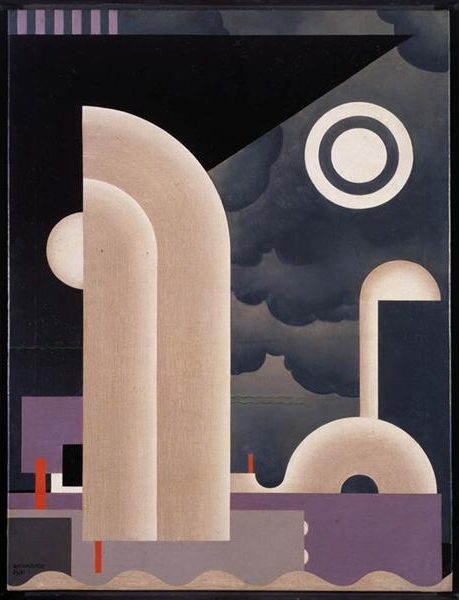
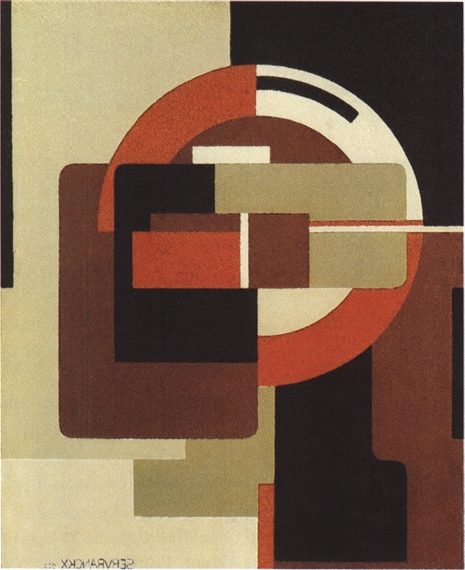
This book shaped ideas about art in Belgium. It talked about the power of abstract forms. These ideas influenced Surrealist artists in Brussels and Paris.
Servranckx’s art also inspired later movements. His use of geometry and color affected Op Art and Minimalism. Artists like Pol Bury and Walter Leblanc looked to Servranckx’s work as they made their own abstract art.
Frequently Asked Questions
Victor Servranckx was a key figure in early 20th century abstract art. His work and career shaped the development of geometric abstraction in Belgium and beyond.
What movement is Victor Servranckx associated with in art history?
Victor Servranckx is linked to abstract art and geometric abstraction. He was part of the first wave of abstract artists in Belgium in the early 1900s.
Servranckx embraced cubism and constructivism in his work. These styles shaped his unique approach to non-figurative painting.
What are some of the most famous works by Victor Servranckx?
“Opus 2” from 1923 is one of Servranckx’s well-known paintings. It shows his skill with geometric shapes and bold colors.
His 1924 exhibition at Galerie Royale in Brussels featured over 100 works. This show cemented his place as a leading abstract artist.
How did Victor Servranckx contribute to abstract art?
Servranckx helped bring abstract art to Belgium. He made his first non-figurative work in 1915, very early in the abstract movement.
He wrote “Pure Art: A Defense of the Aesthetic” with René Magritte in 1922. This text supported abstract art ideas.
What characterizes the style of Victor Servranckx’s paintings?
Servranckx used simple geometric shapes in his art. He favored clean lines, circles, and squares.
Bold colors were key in his work. He often used bright, pure hues to create striking compositions.
How did Victor Servranckx’s early work differ from his later pieces?
Servranckx’s style evolved over time. His early works showed cubist influences.
Later, he moved toward more pure abstraction. His later pieces had fewer recognizable objects and more focus on form and color.
What influence did Victor Servranckx have on other artists of his time?
Servranckx helped spread abstract art ideas in Belgium. His work inspired other artists to explore non-figurative styles.
He taught at art schools and shared his ideas. This helped shape the next generation of Belgian abstract artists.

